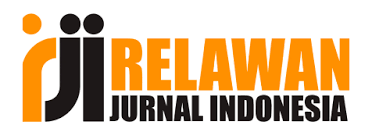PERAN IMAM DALAM TEOLOGI RAHMAT THOMAS AQUINAS DAN RELEVANSINYA DENGAN DISKURSUS PROBLEMATIK HIDUP PARA IMAM MASA KINI
Abstract
The long history of the Catholic Church shows that until after the Second Vatican Council, a priest was seen as an important mediator of God's grace. This article aims to describe the role of the priest in Thomas Aquinas’ Theology of Grace and its relevance for the problematic discourse on priests today. The sacrament of priesthood is a sign of special grace that enables priests to have the authority to offer sacrifices (celebrate the eucharist), forgive sins, bless, teach and sanctify. However, the problems or abuses committed by today’s priests appear to challenge the broad and respected consensus regarding the role of priests that has long been entrenched. The concept of the grace of the sacrament of priesthood continues to be challenged. The method used in this research is a qualitative descriptive method. The data source in research is the presentation of spoken or written words or sentences sourced from Church documents, books, research results, journal articles and also other written sources that can be accounted for. Based on the research results, it was found that, a priest is a link in creating good relationships, from God to humans and from humans to God. Therefore, amidst the problems of today’s priests, it is necessary to realize that the sacrament of priesthood does not necessarily make a priest holy and free to live without the challenges of the world. The free grace of the sacrament of priesthood requires the active participation of a priest to fulfill the reception of that grace, maintain and distribute it properly. To be able to carry out his duties as a distributor of grace in the world, anywhere, anytime and in any situation, priests must have deep and strong spiritual integrity and manifest faithful obedience to God and His Word.
Copyright (c) 2024 Yohanes Hans Monteiro, Fransiskus Bala Kleden, Yohanes De Brito Nanto, Hendrikus Sie, Kornelius Kesar Frengki Keta

This work is licensed under a Creative Commons Attribution-NonCommercial-ShareAlike 4.0 International License.

This work is licensed under a Creative Commons Attribution-NonCommercial-ShareAlike 4.0 International License







.png)




